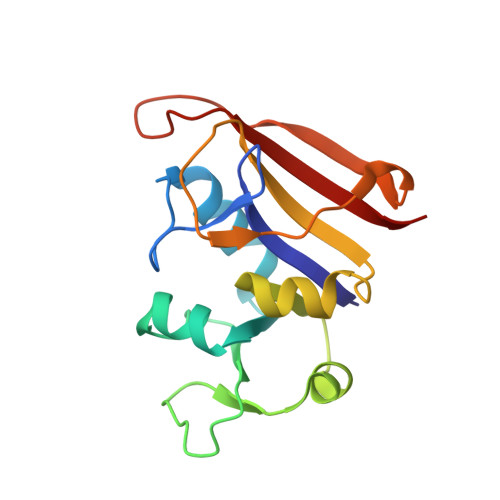Chiral evasion and stereospecific antifolate resistance in Staphylococcus aureus.
Wang, S., Reeve, S.M., Holt, G.T., Ojewole, A.A., Frenkel, M.S., Gainza, P., Keshipeddy, S., Fowler, V.G., Wright, D.L., Donald, B.R.(2022) PLoS Comput Biol 18: e1009855-e1009855
- PubMed: 35143481
- DOI: https://doi.org/10.1371/journal.pcbi.1009855
- Primary Citation of Related Structures:
7T7Q, 7T7S - PubMed Abstract:
Antimicrobial resistance presents a significant health care crisis. The mutation F98Y in Staphylococcus aureus dihydrofolate reductase (SaDHFR) confers resistance to the clinically important antifolate trimethoprim (TMP). Propargyl-linked antifolates (PLAs), next generation DHFR inhibitors, are much more resilient than TMP against this F98Y variant, yet this F98Y substitution still reduces efficacy of these agents. Surprisingly, differences in the enantiomeric configuration at the stereogenic center of PLAs influence the isomeric state of the NADPH cofactor. To understand the molecular basis of F98Y-mediated resistance and how PLAs' inhibition drives NADPH isomeric states, we used protein design algorithms in the osprey protein design software suite to analyze a comprehensive suite of structural, biophysical, biochemical, and computational data. Here, we present a model showing how F98Y SaDHFR exploits a different anomeric configuration of NADPH to evade certain PLAs' inhibition, while other PLAs remain unaffected by this resistance mechanism.
- Department of Computer Science, Duke University, Durham, North Carolina, United States of America.
Organizational Affiliation:



















